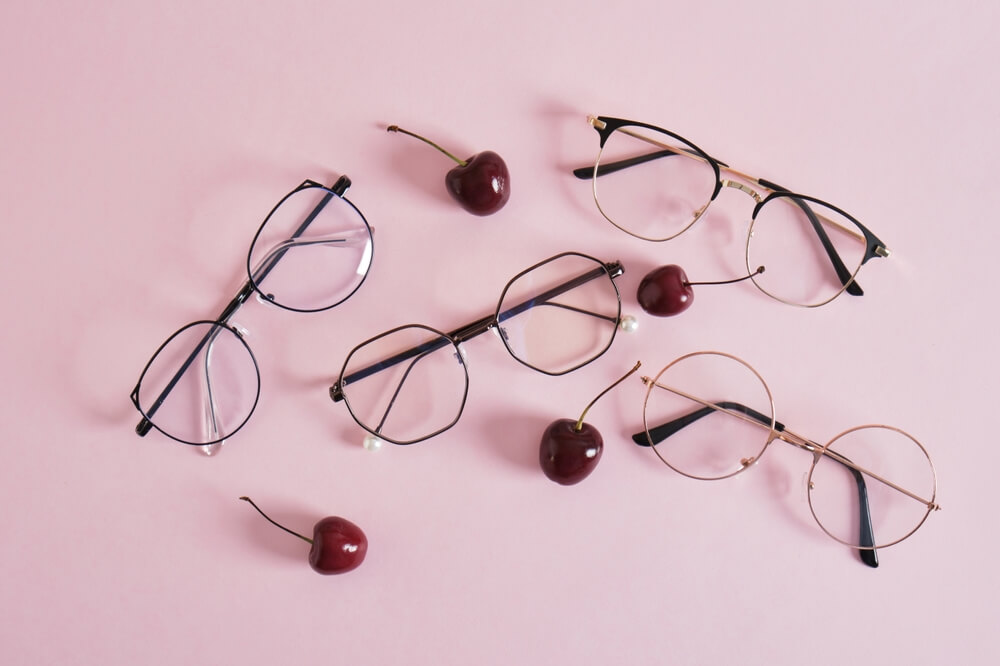Looking At Lens Materials
There is so much that goes into creating a pair of glasses that are perfect for you as an individual, from the length of the arms to ensure they stay on your face, to the shape and style of the frames to ensure that they suit your personal style and are comfortable for you to wear all the time, along with the shape and type of lens that is put into your frames to make sure it fits your chosen frames perfectly and is catered to your vision needs. A crucial aspect of improving your vision with glasses is the materials from which the lenses are made from! Here are some lens options and their unique traits, to help you make the best choice for you…

Glass Lenses: A Classic Choice
Traditional glass lenses have been a staple in eyewear for centuries. They are known for their exceptional optical clarity, and for providing a high-definition view of the world. However, glass lenses tend to be heavy and prone to shattering, making them less popular in recent times… especially when it comes down to little ones, they're not exactly the most ‘playground proof’! Advances in lens technology have led to lighter and more durable alternatives.
CR-39: Balancing Affordability and Quality
CR-39, also known as plastic lenses, revolutionised the eyewear industry with its lightweight nature and affordability. While not as impact-resistant as other materials, CR-39 lenses offer excellent optical quality, making them a popular choice for individuals with lower prescriptions. Their versatility and cost-effectiveness continue to make them a great option… if you can get good vision and save money at the same time, what's not to love?!
Polycarbonate: Durability and Safety
For those seeking a more robust lens material, polycarbonate is an ideal choice. Originally developed for aerospace applications, polycarbonate lenses are highly impact-resistant, making them a favourite for sports eyewear and children's glasses. While offering a thinner profile than CR-39, they may slightly compromise optical clarity in comparison to higher-end options.
High-Index Lenses: Thinner and Lighter
High-index lens materials are engineered to bend light more efficiently than traditional materials, allowing for thinner and lighter lenses. They are especially beneficial for individuals with higher prescriptions, as they reduce the "coke bottle" effect that thicker lenses can create. Although high-index lenses can be pricier, their aesthetic and comfort advantages make them well worth considering.
Trivex: The Best of Both Worlds
Trivex is a relatively new addition to the lens material spectrum, offering a balance between the optical clarity of CR-39 and the impact resistance of polycarbonate. Trivex lenses are lightweight, thin, and provide excellent optics, making them a compelling choice for those who prioritise both performance and comfort.
Photochromic and Polarised Lenses: Functionality and Versatility
Beyond the material itself, certain lenses come with added features. Photochromic lenses, commonly known as transition lenses, adjust their tint according to the level of UV light exposure, providing both indoor and outdoor comfort. Polarised lenses, on the other hand, reduce glare from reflective surfaces like water and roads, enhancing visual comfort during outdoor activities.
Choosing the right materials for your lenses to be made from is so important for your glasses-wearing experience. You may see durability, looks, or optical clarity as the most important aspect of your glasses or even all of these… wherever your priorities lay, there are materials out there for you!
Each option comes with its pros and cons, but understanding the benefits of each material is crucial for making the best decision… especially when it comes down to your eye health! Look out for your eyes and treat them well, you want to take care of them as well as you can so that they can do the same for you…
Author: John Dreyer Optometrist Bsc(Hons), MCOPTOM, DipCLP
Created: 18 Oct 2023, Last modified: 7 Jan 2025

